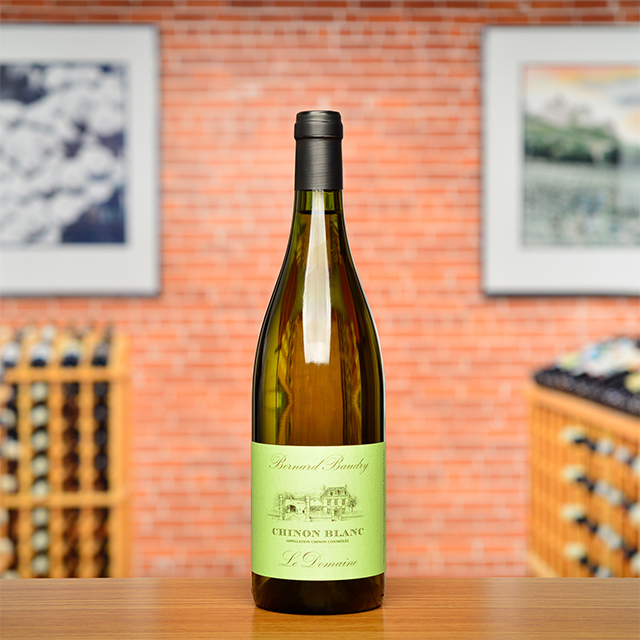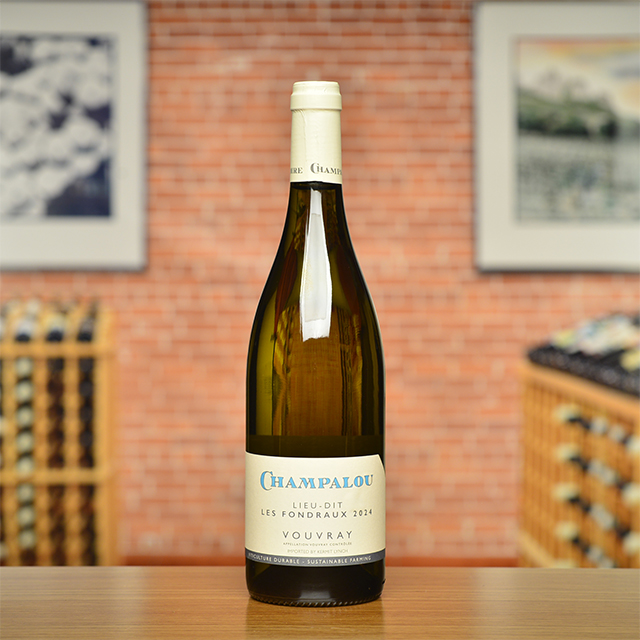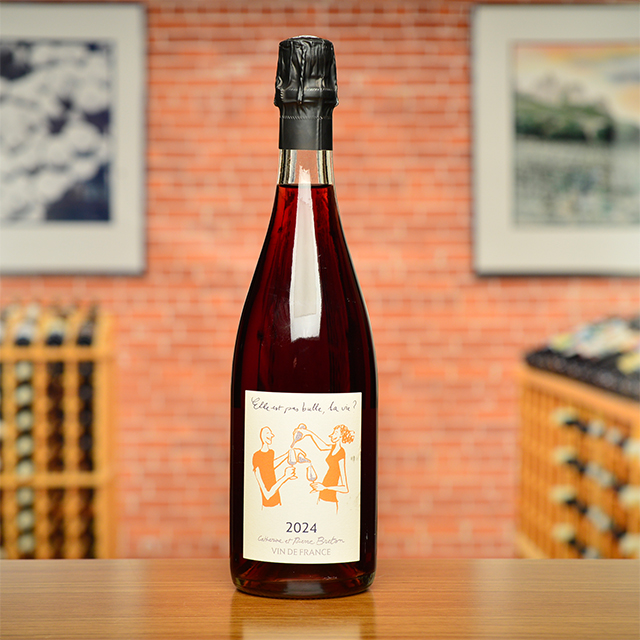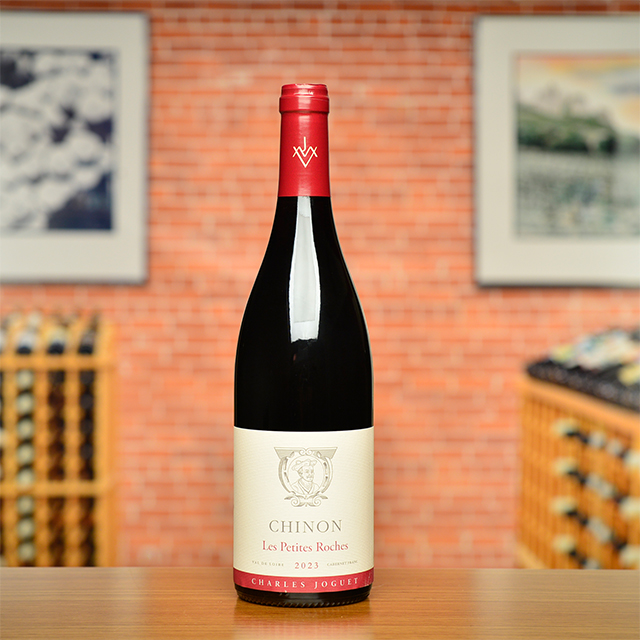Notify me
2018 Sancerre
Domaine Hippolyte Reverdy
A model for Sauvignon Blanc born from the Loire’s Kimmeridgian limestone. Reverdy’s trademark is a generous flavor of blossoming flowers channeled over the palate, culminating in a finely etched mineral finish. Ethereal and full of charm, this Sancerre comes into precise focus on the crisp, mouthwatering finale. A whisper of fresh-squeezed lemon lingers on the lips and tongue, zestfully inviting the next sip. Don’t miss yet another classic from this Loire Valley reference.
—Anthony Lynch
| Wine Type: | white |
| Vintage: | 2018 |
| Bottle Size: | 750mL |
| Blend: | Sauvignon Blanc |
| Appellation: | Sancerre |
| Country: | France |
| Region: | Loire |
| Producer: | Domaine Hippolyte Reverdy |
| Winemaker: | Michel Reverdy |
| Soil: | Limestone |
| Farming: | Lutte Raisonnée |
| Alcohol: | 12.5% |
More from this Producer or Region

2023 Chinon Blanc
France | Loire
A rare Chenin Blanc from the land of Cabernet Franc. Ultra fresh and brimming with citrus blossom and orchard fruit notes, it has a saline, mineral finish that leaves my palate simultaneously satisfied and begging for more. Try it with fresh trout, grilled whole topped with chimichurri or smoked and tossed into a Niçoise salad.

2019 Vin de France Rouge Grolleau/Cabernet Franc “Clandestine”
France | Loire
A lovely combination of Grolleau Noir and Cabernet Franc, there seems to be a synergistic effect elevating both grapes to create a juicy, spicy, refreshing whole.

2024 Muscadet Sèvre et Maine Sur Lie
France | Loire
Classic Muscadet aromas endure, but there’s a complexity here that’s uncommon for an appellation known for its simple oyster wines.

2024 Vouvray “Les Fondraux”
France | Loire
The contrast of ripe, succulent Chenin Blanc fruit with a spike of flinty minerality is like licking honey off an arrowhead.

2020 Saumur Champigny “Clos de l’Échelier”
France | Loire
Fine, with bright acid, sleek silkiness, and great length, it is the most elegant of all of Thierry’s red wines.

2024 Vin de France Rosé Brut “Elle est pas bulle la vie?”
France | Loire
It’s refreshingly bright on the palate, flush with delicate notes of strawberry rhubarb, and dangerously quaffable.

2024 Pouilly-Fumé “Vieilles Vignes”
France | Loire
The classic Sauvignon Blanc characteristics are present, but understated—floral notes, subtle citrus, a cool grassiness—and there’s a chalkiness so textural you can feel it as you taste.

2021 Chinon “La Croix Boissée”
France | Loire
This is the grandest bottling of Cabernet Franc from one of Chinon’s most outstanding producers.

2023 Chinon “Les Petites Roches”
France | Loire
Showing off Cabernet in its most delicate, charming form, rife with aromas of roses, damp earth, and little red berries.

2016 Chinon “Les Varennes du Grand Clos” MAGNUM
France | Loire
Joguet’s Varennes du Grand Clos has fine-grained tannins that seem to melt into the richness of a marbled steak in an almost magical way.
 /
/
About The Producer
Domaine Hippolyte Reverdy
About The Region
Loire

The defining feature of the Loire Valley, not surprisingly, is the Loire River. As the longest river in France, spanning more than 600 miles, this river connects seemingly disparate wine regions. Why else would Sancerre, with its Kimmeridgian limestone terroir be connected to Muscadet, an appellation that is 250 miles away?
Secondary in relevance to the historical, climatic, environmental, and cultural importance of the river are the wines and châteaux of the Jardin de la France. The kings and nobility of France built many hundreds of châteaux in the Loire but wine preceded the arrival of the noblesse and has since out-lived them as well.
Diversity abounds in the Loire. The aforementioned Kimmeridgian limestone of Sancerre is also found in Chablis. Chinon, Bourgueil, and Saumur boast the presence of tuffeau, a type of limestone unique to the Loire that has a yellowish tinge and a chalky texture. Savennières has schist, while Muscadet has volcanic, granite, and serpentinite based soils. In addition to geologic diversity, many, grape varieties are grown there too: Cabernet Franc, Chenin Blanc, Sauvignon Blanc, and Melon de Bourgogne are most prevalent, but (to name a few) Pinot Gris, Grolleau, Pinot Noir, Pineau d’Aunis, and Folle Blanche are also planted. These myriad of viticultural influences leads to the high quality production of every type of wine: red, white, rosé, sparkling, and dessert.
Like the Rhône and Provence, some of Kermit’s first imports came from the Loire, most notably the wines of Charles Joguet and Château d’Epiré—two producers who are featured in Kermit’s book Adventures on the Wine Route and with whom we still work today.
More from Loire or France
2016 Jasnières “Chant de Vigne”
Christine de Mianville France | Loire
2024 Reuilly “Les Pierres Plates”
Domaine de Reuilly France | Loire
2024 Muscadet Côtes de Grand Lieu sur lie “La Nöe”
Eric Chevalier France | Loire
2024 Pouilly-Fumé “Vieilles Vignes”
Régis Minet France | Loire
2024 Vouvray “La Dilettante”
Catherine & Pierre Breton France | Loire
2017 Jasnières “Chant de Vigne”
Christine de Mianville France | Loire
2022 Chinon “Cuvée Terroir”
Charles Joguet France | Loire
2022 Jasnières “Cuvée Sainte Narcisse”
Pascal Janvier France | Loire
2022 Vin de France Rouge “Le Martray”
Grange Saint Sauveur France | Loire
2024 Vouvray
Champalou France | Loire
2020 Muscadet Sèvre et Maine Clisson “La Molette”
Domaine Michel Brégeon France | Loire
2019 Saumur Blanc “Le Clos du Moulin”
Thierry Germain France | Loire
2016 Jasnières “Chant de Vigne”
Christine de Mianville France | Loire
2024 Reuilly “Les Pierres Plates”
Domaine de Reuilly France | Loire
2024 Muscadet Côtes de Grand Lieu sur lie “La Nöe”
Eric Chevalier France | Loire
2024 Pouilly-Fumé “Vieilles Vignes”
Régis Minet France | Loire
2024 Vouvray “La Dilettante”
Catherine & Pierre Breton France | Loire
2017 Jasnières “Chant de Vigne”
Christine de Mianville France | Loire
2022 Chinon “Cuvée Terroir”
Charles Joguet France | Loire
2022 Jasnières “Cuvée Sainte Narcisse”
Pascal Janvier France | Loire
2022 Vin de France Rouge “Le Martray”
Grange Saint Sauveur France | Loire
2024 Vouvray
Champalou France | Loire
2020 Muscadet Sèvre et Maine Clisson “La Molette”
Domaine Michel Brégeon France | Loire
2019 Saumur Blanc “Le Clos du Moulin”
Thierry Germain France | Loire
Kermit once said...

Kermit once said...
If you're looking for value, look where no one else is looking.
Inspiring Thirst, page 211














